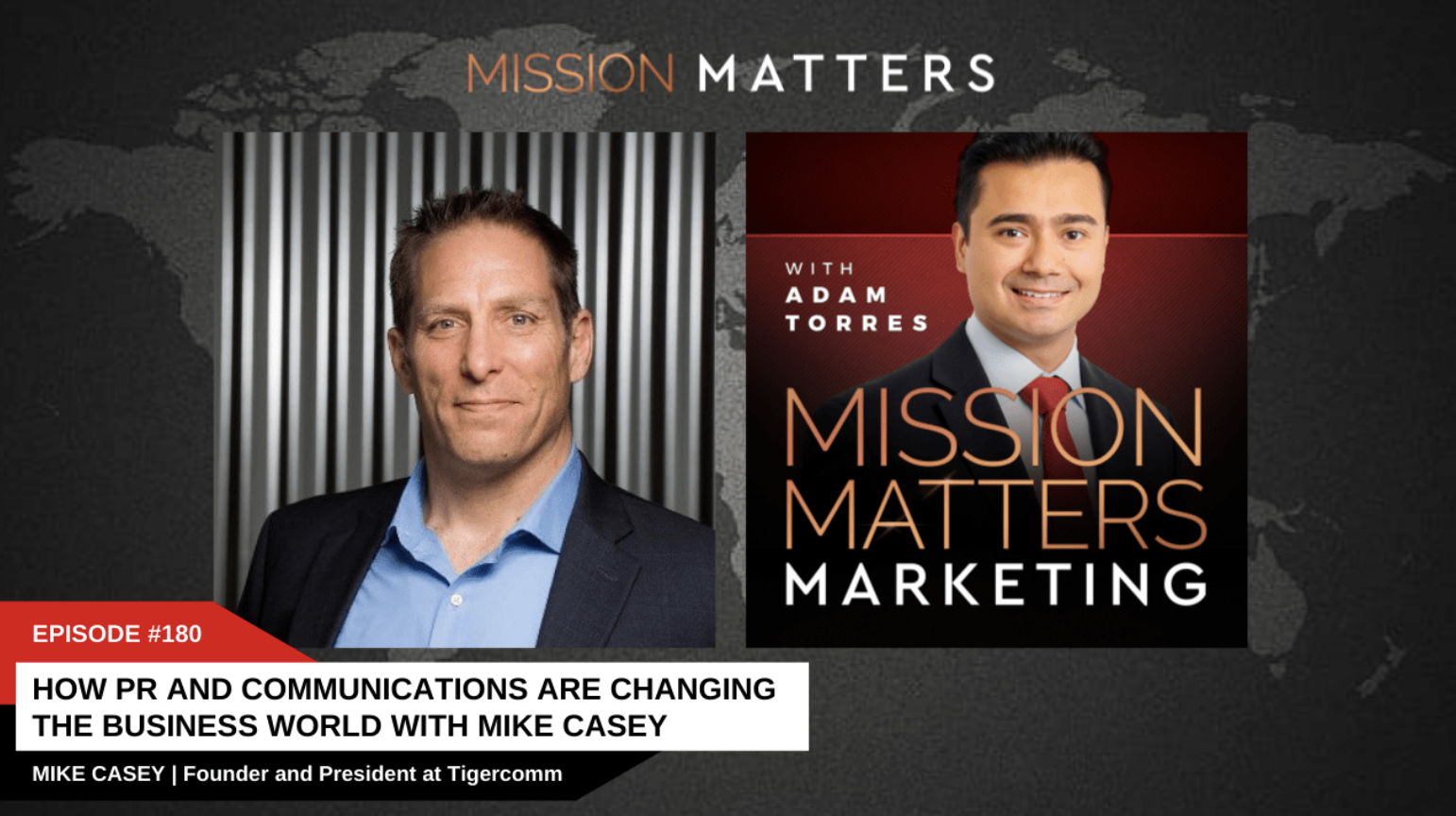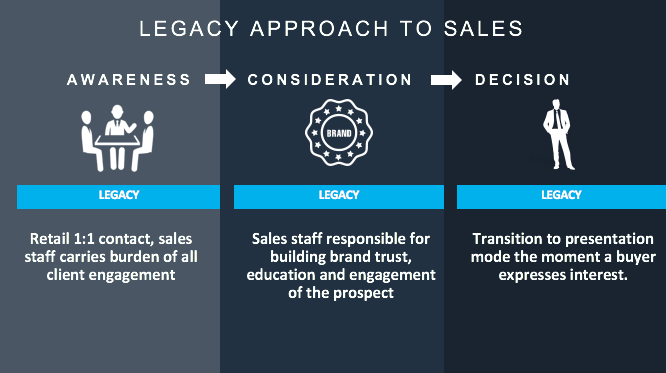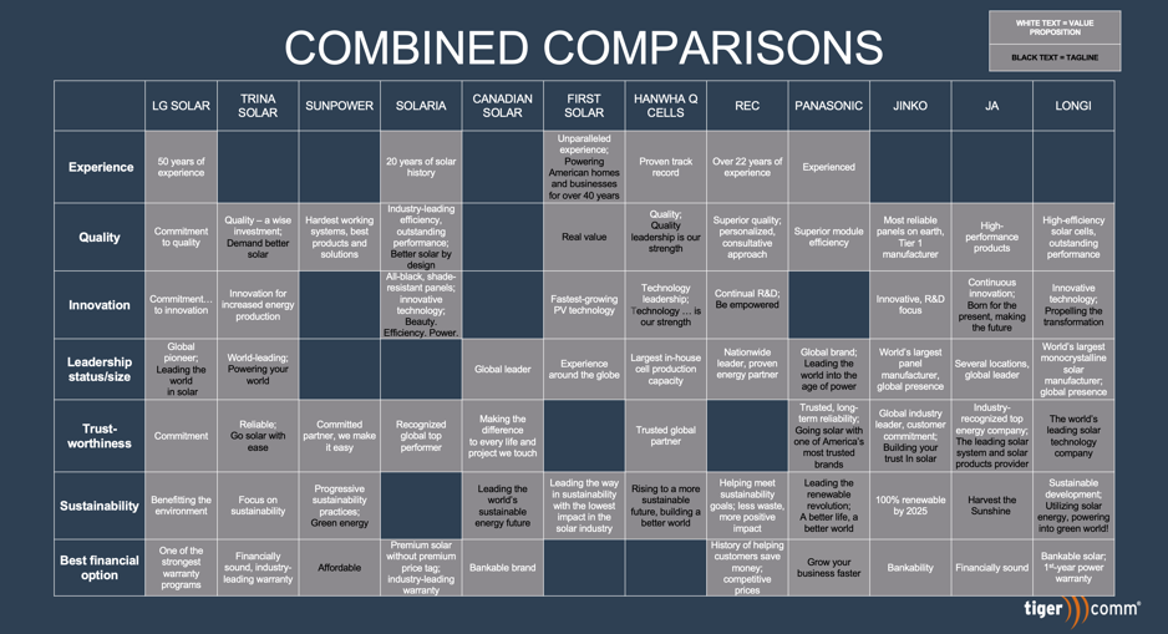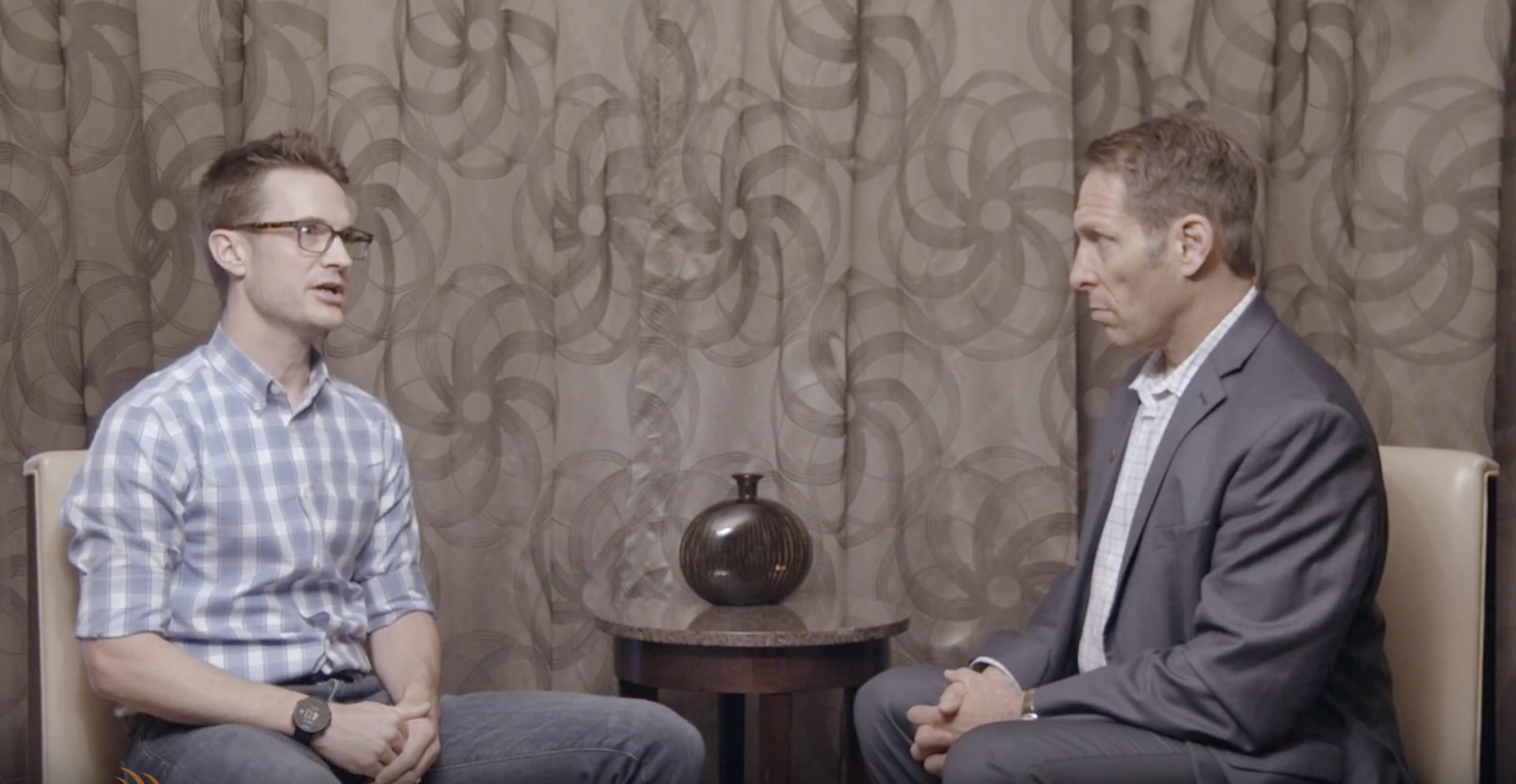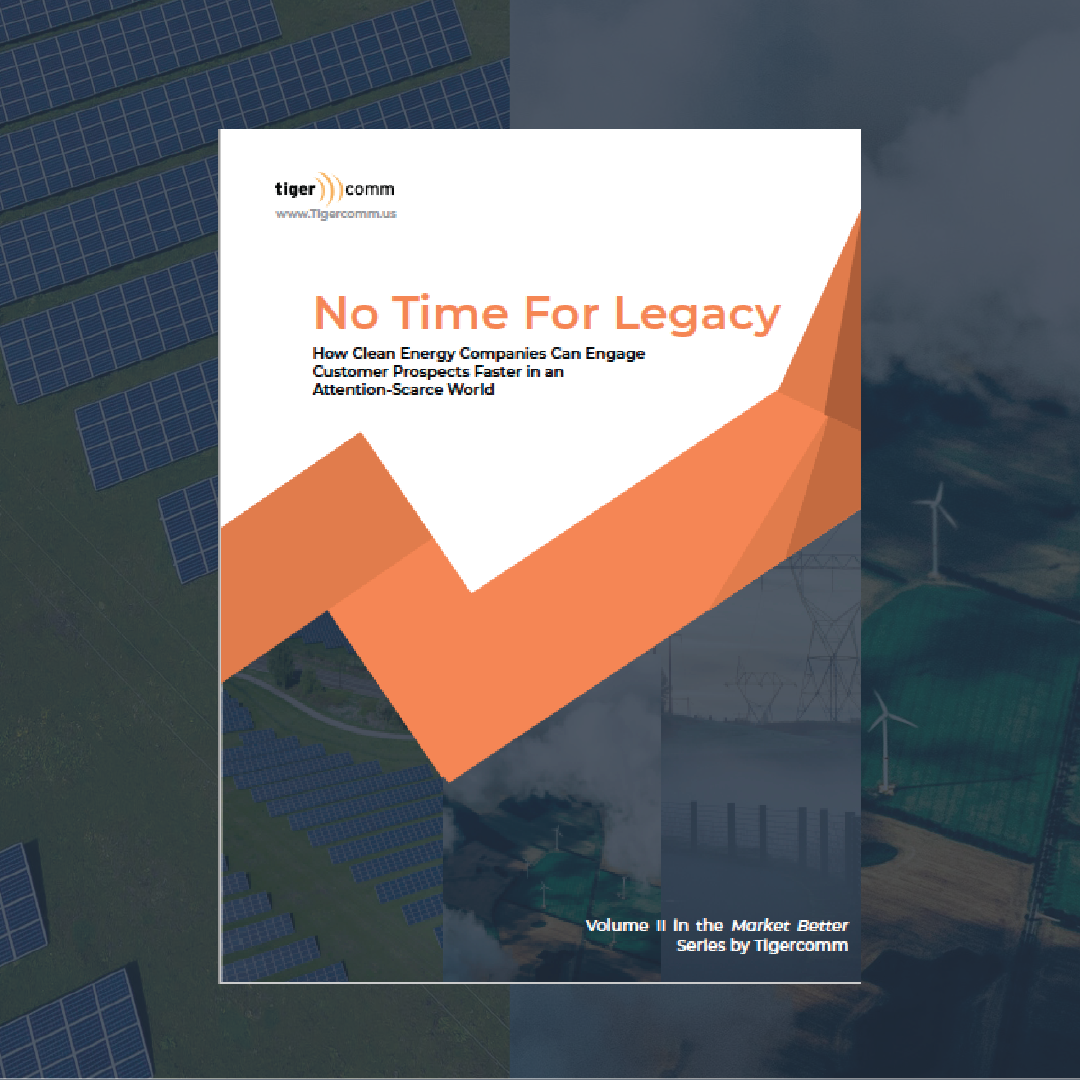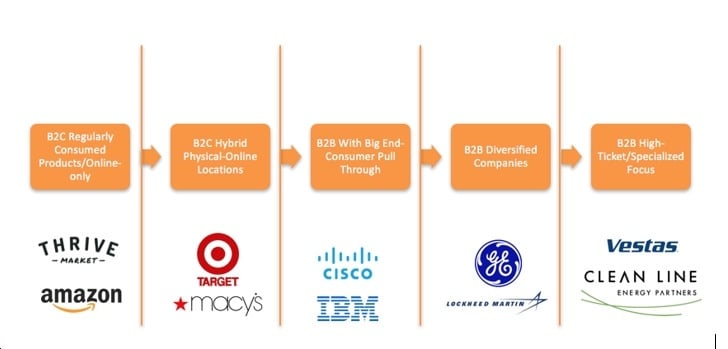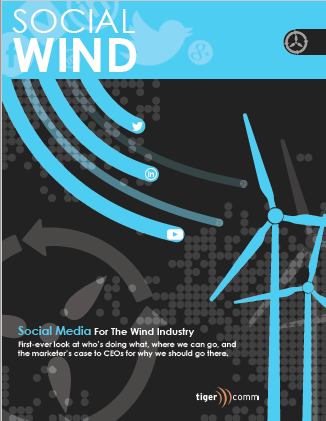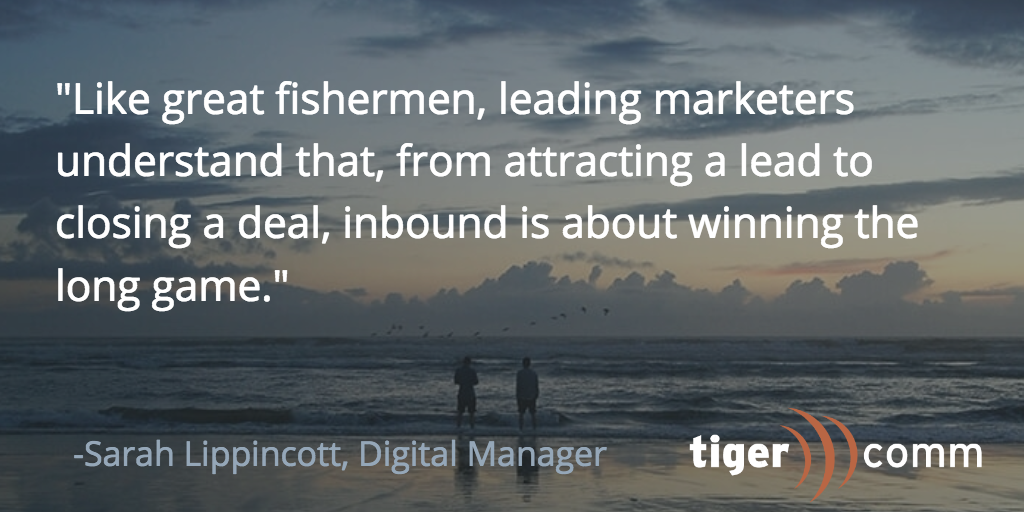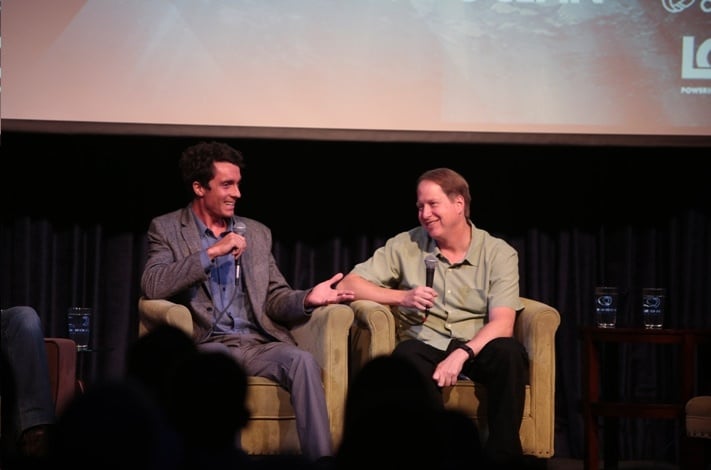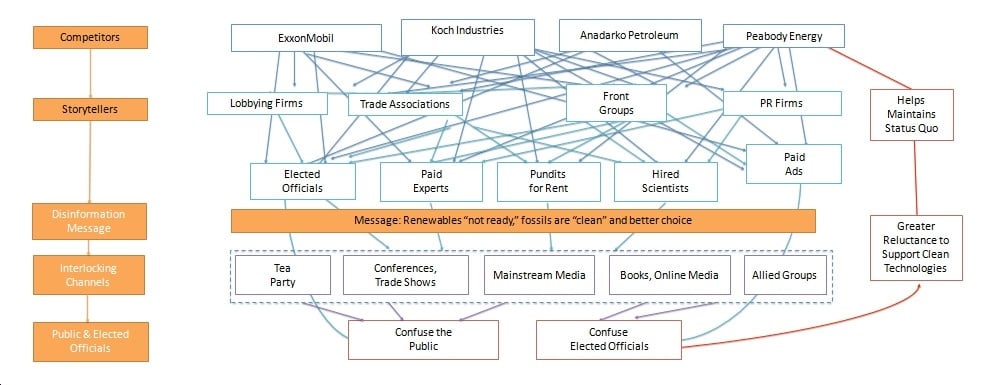Insights
Following a string of successes over the last few years, the clean energy landscape looks extremely bright. Last December in Paris, 196 countries, working with major corporations, agreed to a historic deal to address the challenges of climate disruption by limiting carbon pollution to 2 degrees C or less.
Congress also recently passed a five-year extension of both the wind Production Tax Credit and the solar Investment Tax Credit, which will create a reliable and predictable market environment that encourages growth and investment.
Continue ReadingThis article was updated in October 2023 to reflect the most recent industry developments.
We had the pleasure to go on the Growth Secrets Podcast with host Reade Milner. Reade runs an intriguing marketing consulting practice in Atlanta that helps a range of businesses market better.
Continue ReadingBy Melissa Baldwin and Mike Casey
Most clean economy businesses need to build profiles for both their company and individual members of their executive teams. Their reasons vary, often by where the company is in the business life cycle. We find a lot of our clients’ profile building needs clusters at these points:
Continue Reading#Cleantechers - Few electrons in the universe will move differently because I'm named as a finalist with honorable mention for the Cleanies' "Trailblazer" award.
Don't get me wrong, I'm happy I got that far. My mom will be thrilled. My kids might nod their heads (Ashlyn Casey). Maybe my wife will say "good job" this weekend before telling me to clean out the dog run.
But I think there's bigger significance here that's worth pointing out. I remember when clean economy was so nascent that an awards program would have been laughable.
We know times have changed because:
1.) This award program actually exists.
2.) There's enough momentum and growth in our sectors that companies and people apply/submit others for consideration. Lots of them.
3.) People actively compete to win.
It's super gratifying to see clean economy continue to expand. Bigger trade shows, increased association budgets and award programs are all leading indicators. That is what's worth celebrating.
Congrats to winners Marion Hill, Chris Perron, Michael Eckhart and co-honorable mention Janani Ramkumar.
Also, John Engel and Julia Pyper for winning their respective categories.
Cleantechers, below I share some first impression takeaways from Tuesday’s election results. I offer these through the lens of my time in politics (25 years) but detached from any opinion I have about candidates or political views. These thoughts are offered strictly from a communications mechanics perspective, with the hopes that it’s of use to fellow clean economy communicators in your work going forward.
Continue ReadingThis article was updated in November 2022 to reflect the most recent industry developments.
Video Marketing for the Renewable Energy Sector
We often hear from our clients and friends in cleantech that one of their biggest challenges is reaching and educating a wide and varied range of audiences. Whether it’s utility executives, corporate customers, policymakers or homeowners, an effective cleantech media communicator can usually get to a win, given the opportunity to sit across the table and have a personal interaction. But your team can’t be everywhere at once, and it can be difficult to reach these audiences at scale and educate them on your company’s value proposition.
Continue ReadingI had the pleasure recently of talking with Joseph Batir, host of the Energy Transition Solutions podcast.
Joe and I talked about:
- Why I’ve found that working in the private sector is easier than working in politics or the nonprofit world via more rationalized client motives (4:25).
- It’s also more satisfying from a client-impact standpoint, because “You cannot sit at an environmental group and regulate the coal industry into sustainability. Some industries simply have to go. They cannot be kept around. Some industries like cement making can be made much more sustainable.” (13:00)"
- How few clean economy sectors are new industries because they’re not directly disrupting incumbents (13:59) and how disrupted incumbents push back hard through our form of legalized corruption known as campaign contributions. They do that instead of just handing over market share and going willingly out of business (15:19) “The disrupted are constantly reacting to the disruptors and the disruptors must manage that with fewer resources than the disrupted have.”
- Why B2B companies’ default reliance on jargony content hurts their sales and violates the Richard Branson rule of narrative simplicity “Any fool can complicate something. It takes a master to simplify it.” (27:10) and why your marketing collateral should be able to pass the “supermarket checkout test” (29:50) because it accommodates the reality that humans make emotional decisions first in order to make a rationale decision (31:27).
Tigercomm talks a lot about improving social media strategies for cleantech companies to compete with incumbent fossil fuel interests. We’ve worked with a strategic SEO agency, Rampiq, for the past few years on our own site and are continuously impressed with the results. We’ve asked Rampiq to write a guest article explaining how clean economy companies can use SEO to boost brand recognition, sales, and the visibility of their products.
Continue ReadingIt’s been a tough couple of years on the conference scene, raising questions about what trade shows will look like post-pandemic. I have to say, though, that it feels like things are finally getting back to normal.
B2B Purchase Decisions In Cleantech And The Digital-Social Criticality Scale
Across clean economy sectors, the sales and marketing teams we talk to share a growing frustration: it’s gotten harder to get renewable energy customer prospects to engage during the marketing process. They’re all too familiar with sending that seventh “touch base” email to a prospect they’ve connected with at the trade show and hearing nothing back. This experience has three main sources: what we’re calling the “VAR Phenomenon” (Volume, Attention, Relevance), and it's increasingly becoming a challenge in the smartphone age.
Continue ReadingThis article was updated in March 2022 to reflect industry changes.
Why Should Cleantech Companies Invest In Social Media?
Spoiler alert: We’ve found that almost every wind energy company is using social media as a limited distribution platform. That’s understandable, because social is great for distribution as the first, highly targeted yet far-reaching platform. And there’s the lure of social media’s lightning-in-a-bottle potential to “go viral,” organically attracting massive numbers of eyeballs with only a modest initial investment.
Yet most wind company programs are leaving on the table the real potential for social media… targeted engagement. Social media is definitely cheap distribution, though for all but a few (like the Federal Reserve), a distribution-centric strategy can’t hold audience attention. There’s too much content and too many voices vying for a finite pool of people’s attention.
The potential for long-term attention through social media lies in targeted engagement, with networks of people investing their time and attention in a company’s products, policies and successes. But the engaged have to find value in engaging. And one of the surest value propositions is not just being responded to, but having impacts on brands, products and policies.
Many companies are already engaging – see ratings from Uber drivers and riders. The trend is underway elsewhere. You can accessorize the car model of your choice, and it’s a sure bet that car companies are using the resulting data to time when customer online input will drive which decisions to make on which models. Others are on the threshold: with only half the daily newspaper reporters on staff as compared to 20 years ago, the news industry continues its financial slide because readers won’t pay the full cost of professional reporting. It’s being argued that news reporting’s most viable path is having readers choose what gets reported in the first place. You get the idea.
The point is that value-add engagement is only secured through a two-way conversation that matters. The buzz phrase is “democratized ownership.” It’s rare right now in high-ticket B2B sales, though the potential value remains. However, those benefits will only be reaped through well-designed, intensively managed social engagement programs. They aren’t cheap, but we see distribution-only tactics beginning to cost the wind industry more in opportunity than targeted engagement will require.
Note: This article was refreshed in March 2022 to reflect the current state of the cleantech industry.
What do your customers buy, really? Is it your product? Or is it something that your product gives them?
Continue Reading
It was fun to talk with Adam Torres of Mission Matters Media about how public relations is both serving and changing the way businesses interact with consumers.
Continue ReadingThis article was updated in January 2021 to reflect the most recent industry updates.
One of the great things about my job is talking to cleantech companies with cutting-edge technology, data-driven execution and great management.
But it’s surprising how many of those companies build legacy marketing communications into their approach for engaging customer prospects.
Continue ReadingThis article was updated in January 2021 to reflect the most recent industry updates.
One of the main challenges new clients bring to Tigercomm is how to increase revenue through marketing communications (“marcom”). In the cleantech sector, high-ticket, B2B sales have long lead times and often include a great deal of due diligence devoted to each sale.
Continue ReadingWe have this recent piece in Renewable Energy Magazine speculating on what clean energy trade shows and conferences will look like as the country emerges from COVID. H/T to Editor Dan McCue.
Continue ReadingI’m fired up about being a speaker at Solar Power International, now part of North American Smart Energy Week. Our presentation was based on an analysis and set of interviews with industry leaders on what the industry can do about profit pressure from commoditization.
Enel Green Power’s Nick Coil: When it Comes to Community Acceptance, Start Using Digital Tools EARLY
Of all the people we’ve interviewed for the Not Just for NIMBY series, Enel Green Power’s Nick Coil has probably spent the most time in rural communities engaged in… well, community engagement. He shared other interviewees’ views on the increasing difficulty of community relations, the dominance of Facebook in rural communities and the criticality of using social media as part of a community relations program. But Nick had some sophisticated observations and tactical recommendations that made this interview particularly useful for other wind IPPs.
Continue ReadingAcross clean energy sectors, sales and marketing teams we talk to share a common challenge: It has gotten harder to get prospects to engage.
That’s because the ubiquitous use of digital platforms (think smartphones, tablets, Alexa) and abundance of published content has changed the way buyers are purchasing.
Consider your own buying behavior. The last time you went to purchase anything over $100, did you Google it first? Check the reviews or comps online?
Continue ReadingReturning visitors to the Tigercomm blog will likely notice that something is different here: Tigercomm has rebranded our blog. Previously known as “ScalingGreen,” we are excited to bring you future content and insights from “ScalingClean.”
Continue ReadingIt’s what matters most to marketing and sales teams in any industry: Measuring success.
Continue ReadingBy Sarah Lippincott and Mike Casey, excerpt from Social Wind.
Continue ReadingWe're releasing the first-ever study of social media use by major wind companies, showing a nearly 63 percent usage rate of the major social media channels by 14 top wind companies. But with the industry's rapid growth comes an opportunity for wind companies to use social media strategies to drive sales and secure public affairs outcomes.
Continue ReadingOne of the biggest challenges in marketing is how to generate more leads and close more sales. The good news: inbound marketing is making it much easier to do those things. Today, three out of four marketers across the globe are taking an inbound approach to marketing.
Continue Reading
The B2B (business-to-business) environment is rapidly changing. Most of this change is driven by businesses modeling the purchasing behavior of the general population by using personal and professional networks, as well as information available online, to inform decision making. This “crowd sourcing” of solutions is a paradigm shift for any business that provides products, services or information to other businesses.
Continue ReadingQ: "Why doesn't ocean acidification get the same attention as climate change?"
A: "Too many syllables. It's not a good hashtag."
This was the tongue-in-cheek answer to a serious question that I found myself giving, as a panelist in front of a crowd of 200 people at Cross Campus in Santa Monica, California.
Continue ReadingDavid Briggs has long-standing experience in the solar industry, including three years at a cleantech communications firm and three years as Marketing Manager at microinverter manufacturer Enphase Energy. Briggs now works as Director of Marketing at mounting systems provider IronRidge. Recently, Briggs took a few minutes from his busy schedule to talk to us about an important topic for the solar industry: how best to engage and market to your customer base, and ultimately to "truly out-compete traditional energy." We greatly appreciate Briggs' insight-filled responses to our questions.
Continue ReadingThis past September, Tigercomm President Mike Casey interviewed former “super lobbyist” Jack Abramoff. Whatever else you think about him, the fact is that Abramoff knew the business of Capitol Hill influence peddling inside-out. What Abramoff said to Casey was that the fossil fuel industry is deadly serious about this game, and that the clean energy industry needs to fully understand that. Case in point? A new analysis on The Great Energy Challenge blog by Bill Chameides, Dean of Duke's Nicholas School of the Environment. The key takeaways?
Continue Reading
We recently hosted Politico senior energy & environment reporter Darren Goode for a Scaling Green Communicating Energy talk. Our first post discussed Goode's estimates of the odds that various pieces of energy legislation will pass Congress and be signed into law. Our second post featured Goode's tips for pitching your energy story to a top reporter like him. Today, we've got Goode's thoughts on how social media - particularly Twitter - is changing the way he reports and informs readers.
According to a recent TechCrunch story, "when untruthful information is immediately corrected in a news story," it doesn't fix the effect. In fact, a new study concludes, calling out false information can paradoxically make users “more resistant to factual information." Or, as the TechCrunch article puts it: "The more truth we read, the more we tend to believe strongly held lies."
Continue ReadingOver at the Smart Blog on Leadership, there's an interview with James Epstein-Reeves, president of Do Well Do Good, "on corporate social responsibility, philanthropy, and cause marketing," as well as on "what to expect in 2012." The first question, of course, is "Why are companies engaged in sustainability?" The answer, by Epstein-Reeves, is that there are six reasons:
Continue Reading

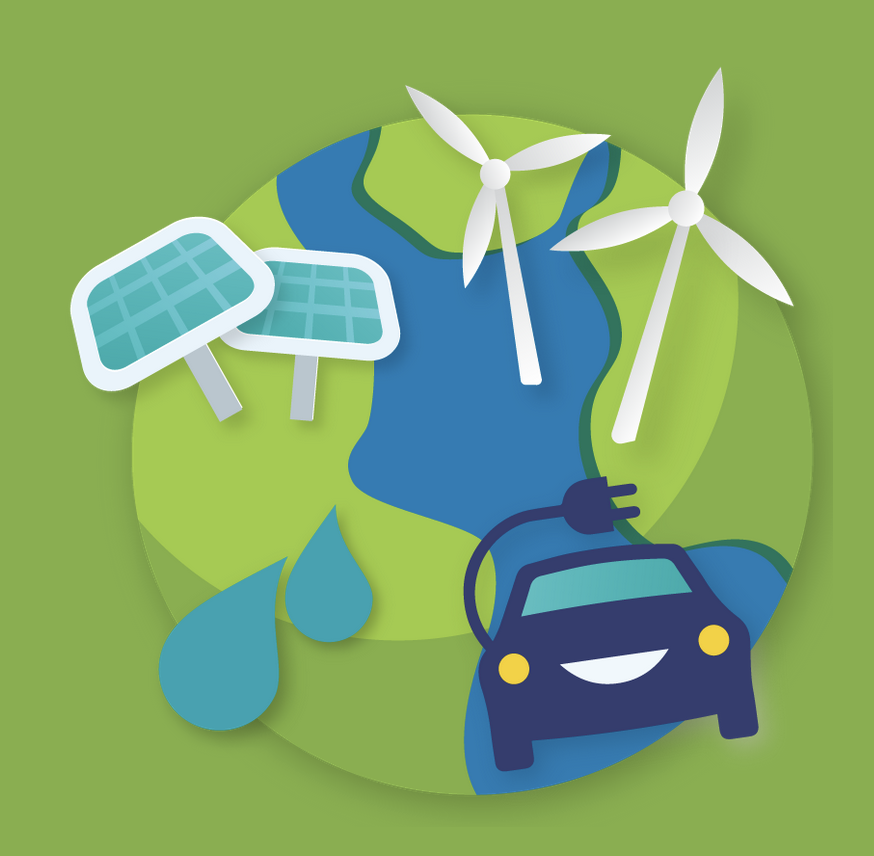
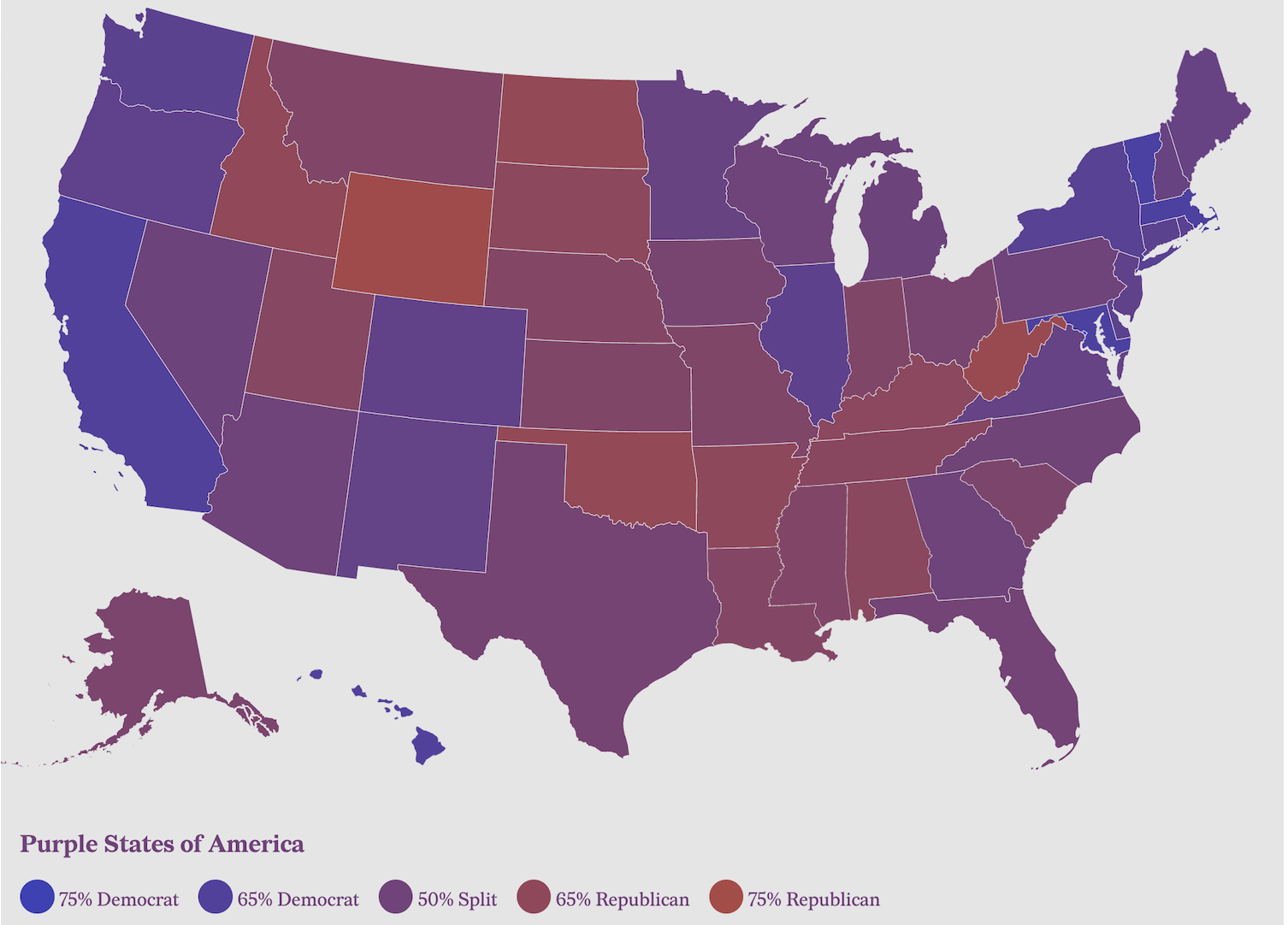
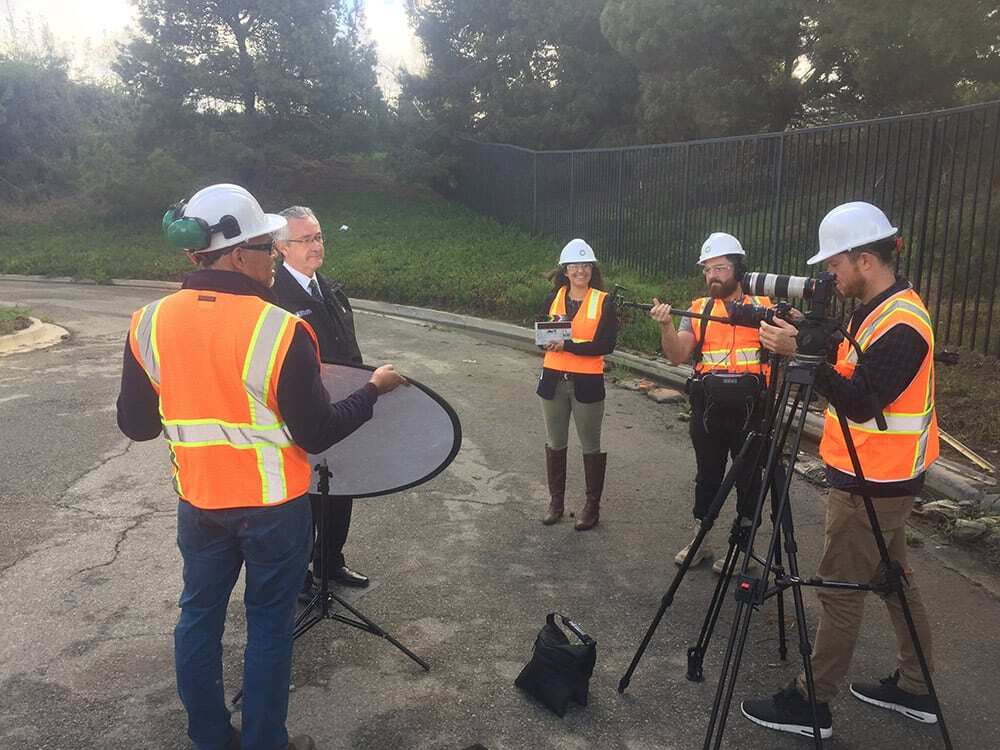
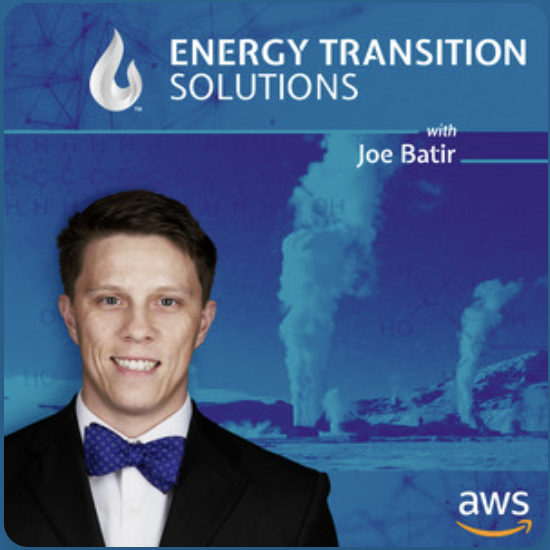

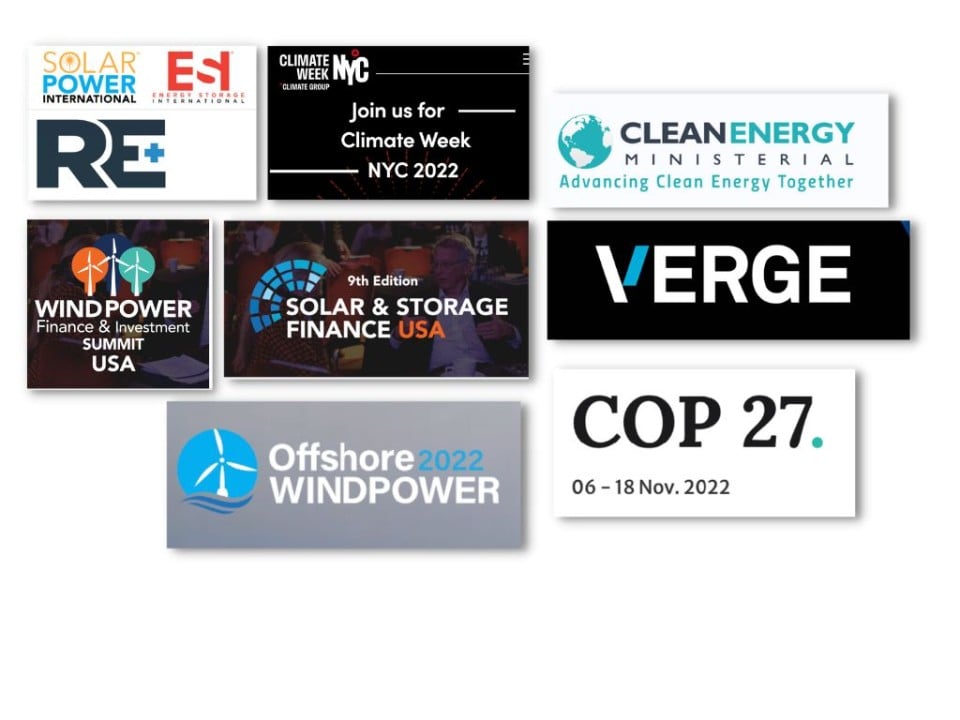
![Modern Cleantech Marketing Guide + [B2B Marketing Checklist]](https://www.tigercomm.us/hubfs/Screenshot%202022-03-08%20at%206-58-47%20PM-png.png)

